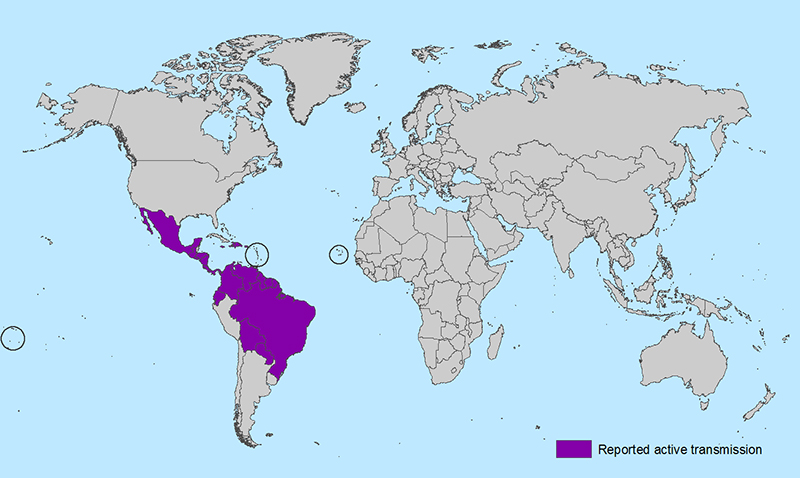Public Health Concerns: Zika Virus
 Salus University launched public health programs in 2010 to help offset the underrepresentation of optometry, audiology and other healthcare professions in the public health arena. Since then, the collective consciousness of the University community with regard to public health concerns has risen considerably.
Salus University launched public health programs in 2010 to help offset the underrepresentation of optometry, audiology and other healthcare professions in the public health arena. Since then, the collective consciousness of the University community with regard to public health concerns has risen considerably.
In mid-2015, no one outside of medical circles had heard of the zika virus. Now, in early 2016, the World Health Organization (WHO) has declared that a disease linked to the zika virus in Latin America poses a “global public health emergency. The WHO recommends a united response and puts zika in the same category of concern as ebola. Experts are concerned that the virus is spreading far and fast, with devastating consequences. The infection has been linked to cases of microcephaly, a neurodevelopmental disorder, in which babies are born with underdeveloped brains, which can lead to future developmental issues.
Zika virus infections have been reported in travelers returning to the United States. With the recent outbreaks in the Americas, the number of zika virus disease cases among travelers visiting or returning to the United States likely will increase. These imported cases may result in local spread of the virus in some areas of the continental United States, meaning these imported cases may result in human-to-mosquito-to-human spread of the virus.
Travel warnings have been issued by the Centers for Disease Control (CDC) for many areas of the globe. Travel notices to some affected areas have been upgraded to Level 2 “Practice Enhanced Precautions.” (Level 3 warnings would discourage all but essential travel to a specific area/country affected by the virus). It is best to consult the CDC website for the most up-to-date information or to consult your healthcare provider if you have any questions.
The CDC has warned women who are pregnant or expect to be pregnant to avoid areas* where the mosquito-borne virus has been found. About one in five people infected with zika virus become symptomatic. Characteristic symptoms include acute onset of fever, maculopapular rash, arthralgia, or conjunctivitis. Clinical illness usually is mild with symptoms lasting from several days to a week. Severe disease requiring hospitalization is uncommon and fatalities are rare. If you suspect you have or may have been exposed to the virus, see your physician right away.